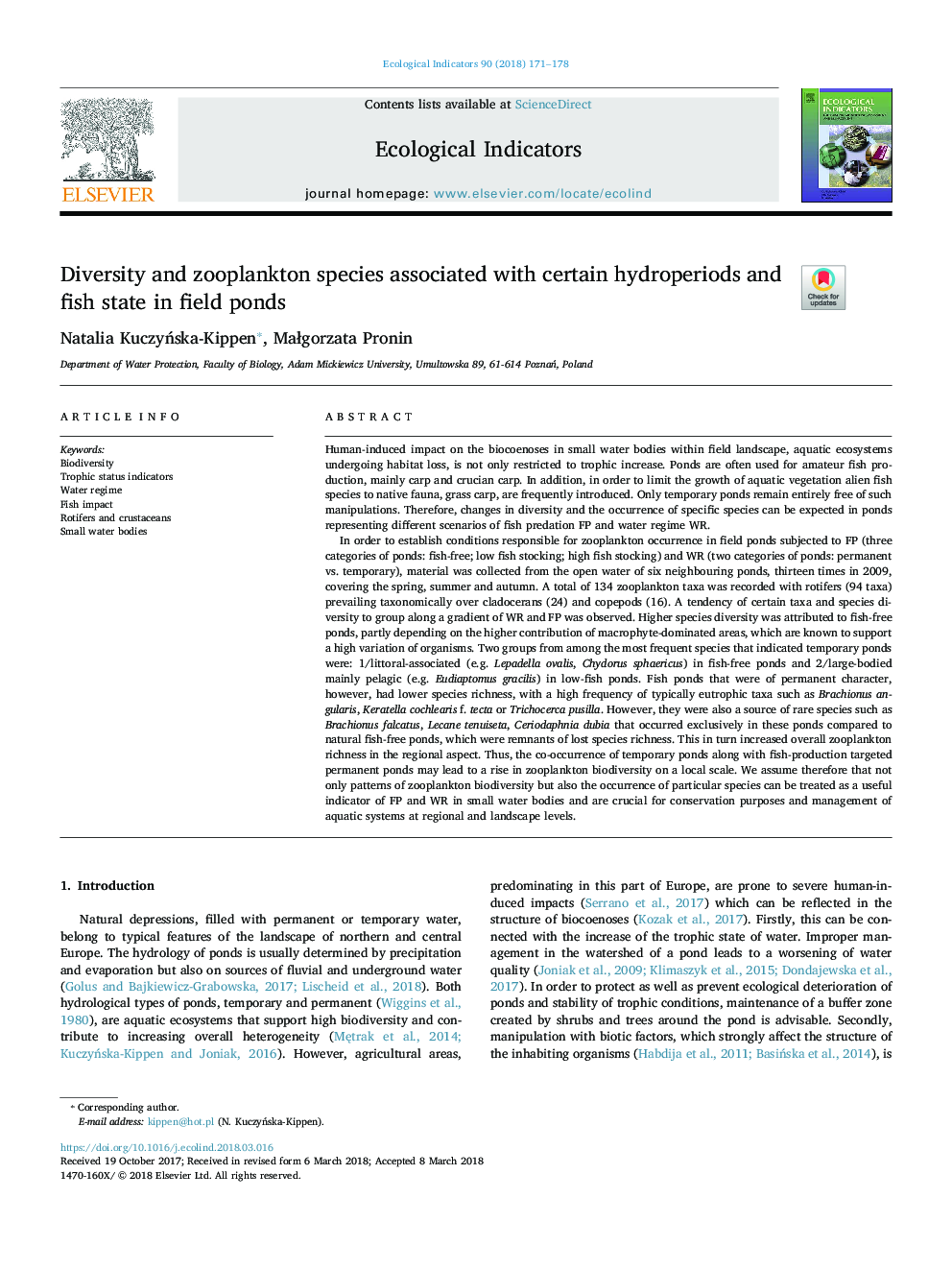| کد مقاله | کد نشریه | سال انتشار | مقاله انگلیسی | نسخه تمام متن |
|---|---|---|---|---|
| 8845392 | 1617112 | 2018 | 8 صفحه PDF | دانلود رایگان |
عنوان انگلیسی مقاله ISI
Diversity and zooplankton species associated with certain hydroperiods and fish state in field ponds
ترجمه فارسی عنوان
گونه های تنوع و زئوپلانکتون با هیدروپریدها و وضعیت ماهی در حوضچه های آبرسانی همراه است
دانلود مقاله + سفارش ترجمه
دانلود مقاله ISI انگلیسی
رایگان برای ایرانیان
کلمات کلیدی
موضوعات مرتبط
علوم زیستی و بیوفناوری
علوم کشاورزی و بیولوژیک
بوم شناسی، تکامل، رفتار و سامانه شناسی
چکیده انگلیسی
In order to establish conditions responsible for zooplankton occurrence in field ponds subjected to FP (three categories of ponds: fish-free; low fish stocking; high fish stocking) and WR (two categories of ponds: permanent vs. temporary), material was collected from the open water of six neighbouring ponds, thirteen times in 2009, covering the spring, summer and autumn. A total of 134 zooplankton taxa was recorded with rotifers (94 taxa) prevailing taxonomically over cladocerans (24) and copepods (16). A tendency of certain taxa and species diversity to group along a gradient of WR and FP was observed. Higher species diversity was attributed to fish-free ponds, partly depending on the higher contribution of macrophyte-dominated areas, which are known to support a high variation of organisms. Two groups from among the most frequent species that indicated temporary ponds were: 1/littoral-associated (e.g. Lepadella ovalis, Chydorus sphaericus) in fish-free ponds and 2/large-bodied mainly pelagic (e.g. Eudiaptomus gracilis) in low-fish ponds. Fish ponds that were of permanent character, however, had lower species richness, with a high frequency of typically eutrophic taxa such as Brachionus angularis, Keratella cochlearis f. tecta or Trichocerca pusilla. However, they were also a source of rare species such as Brachionus falcatus, Lecane tenuiseta, Ceriodaphnia dubia that occurred exclusively in these ponds compared to natural fish-free ponds, which were remnants of lost species richness. This in turn increased overall zooplankton richness in the regional aspect. Thus, the co-occurrence of temporary ponds along with fish-production targeted permanent ponds may lead to a rise in zooplankton biodiversity on a local scale. We assume therefore that not only patterns of zooplankton biodiversity but also the occurrence of particular species can be treated as a useful indicator of FP and WR in small water bodies and are crucial for conservation purposes and management of aquatic systems at regional and landscape levels.
ناشر
Database: Elsevier - ScienceDirect (ساینس دایرکت)
Journal: Ecological Indicators - Volume 90, July 2018, Pages 171-178
Journal: Ecological Indicators - Volume 90, July 2018, Pages 171-178
نویسندگان
Natalia KuczyÅska-Kippen, MaÅgorzata Pronin,
